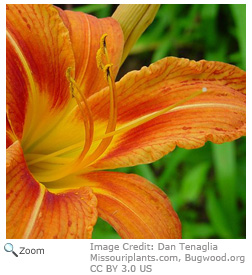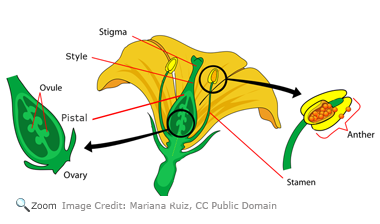The Birds and the Bees
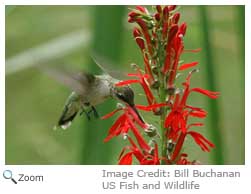
Animals like birds and insects can be
pollinators. When insects and birds get nectar out of a flower, they pick up some pollen as they move from flower to flower, and also can leave some pollen behind. Wind can also help move pollen from one flower to another.
Dicots
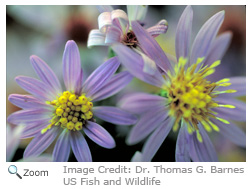
Angiosperms in this group grow two seed-leaves. Their leaves usually have a single main vein that starts at the base of the leaf blade, or three or more main veins that spread out from the base of the leaf. Most plants are dicots, including most trees, shrubs, vines, fruit and vegetable plants and flowers. There are about 200,000 species of dicots.
Monocots
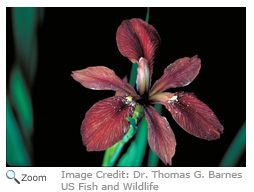 These angiosperms start with one seed-leaf. The main veins of their leaves are usually unbranched. There are about 30,000 species of monocots. Monocots include orchids, lilies, irises, palms, grasses, and grains like wheat, corn and oats. Fruits like dates and bananas also belong to this group.
These angiosperms start with one seed-leaf. The main veins of their leaves are usually unbranched. There are about 30,000 species of monocots. Monocots include orchids, lilies, irises, palms, grasses, and grains like wheat, corn and oats. Fruits like dates and bananas also belong to this group.
 Animals like birds and insects can be pollinators. When insects and birds get nectar out of a flower, they pick up some pollen as they move from flower to flower, and also can leave some pollen behind. Wind can also help move pollen from one flower to another.
Animals like birds and insects can be pollinators. When insects and birds get nectar out of a flower, they pick up some pollen as they move from flower to flower, and also can leave some pollen behind. Wind can also help move pollen from one flower to another.
 Angiosperms in this group grow two seed-leaves. Their leaves usually have a single main vein that starts at the base of the leaf blade, or three or more main veins that spread out from the base of the leaf. Most plants are dicots, including most trees, shrubs, vines, fruit and vegetable plants and flowers. There are about 200,000 species of dicots.
Angiosperms in this group grow two seed-leaves. Their leaves usually have a single main vein that starts at the base of the leaf blade, or three or more main veins that spread out from the base of the leaf. Most plants are dicots, including most trees, shrubs, vines, fruit and vegetable plants and flowers. There are about 200,000 species of dicots. 
